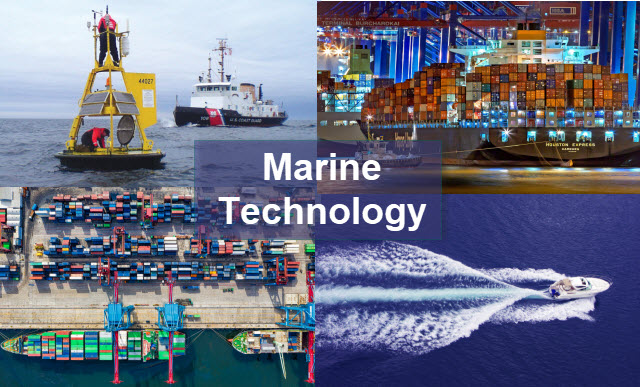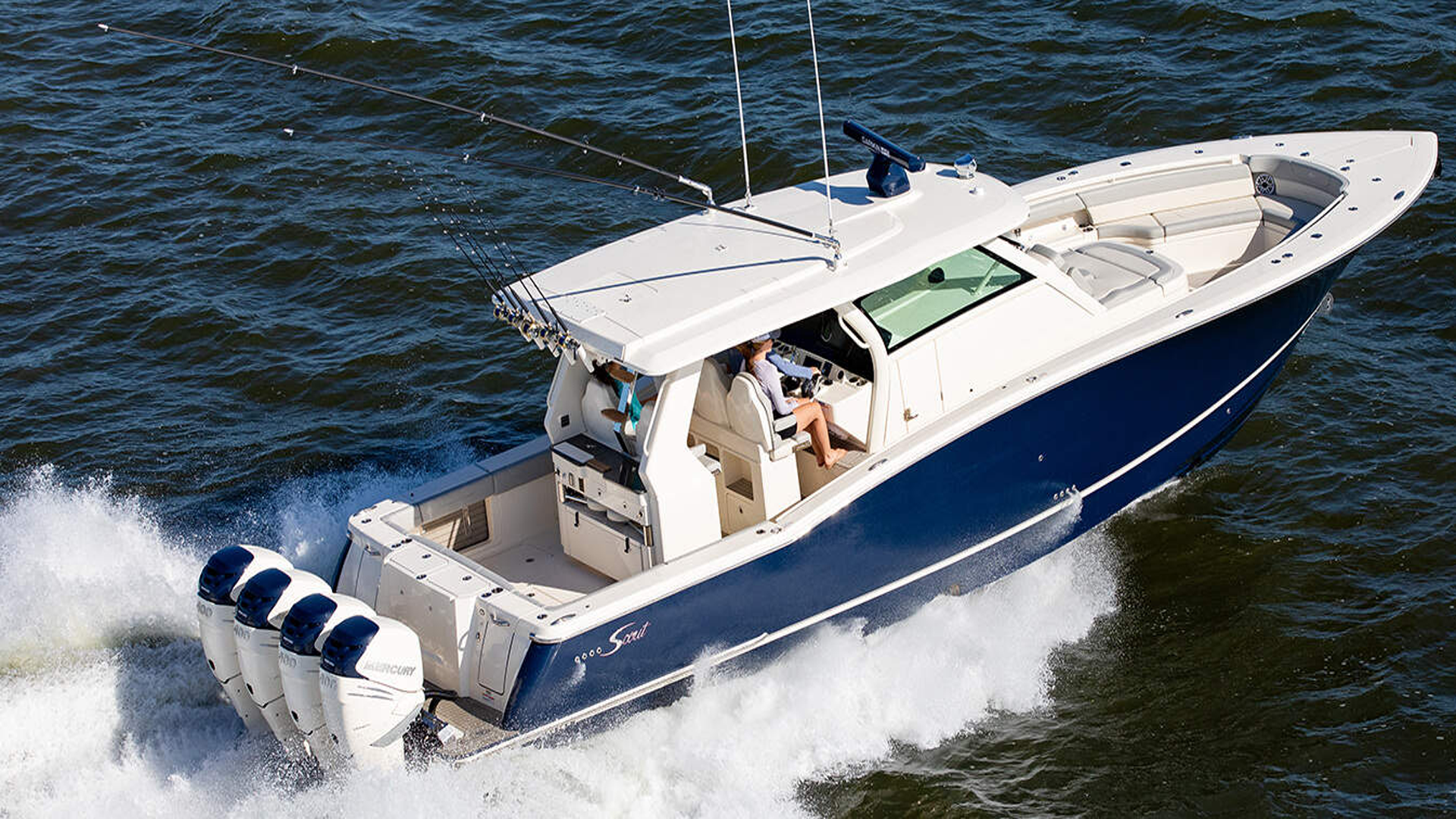Underwater Technology
Underwater Technology Snapshot
Industry Summary
Subsea or underwater technology is defined as the utilization of fully submerged equipment or operations into offshore, deep ocean, or seabed locations. Utilization of these robots allows researchers, businesses, archeologists, and governments reach difficult and unfriendly environments that would otherwise not be explored[1] This technology offers great new opportunities in safety and security, and scientific exploration as many aboveground applications are less efficient, less environmentally friendly, and less accessible to unknown parts of the globe. The market for subsea robotics is expected to reach over $7 billion by 2025 with a continual annual growth rate of 15.1% between 2018-2025[2].
The underwater robotics market is most competitive in Europe, but with growing interest in oil and gas drilling, the Asian Pacific region is expected expand to the highest CAGR over this forecast period[3]. The main drivers of this market are as follows: the increased exploration of minerals in the underwater seabed, military utilization of underwater surveillance technology, the technological advantages of offshore oil and gas, and greater competition between different countries’ defense sectors[4].
Underwater Technology Sectors
Oil and Gas
One of the main uses of subsea technology is for offshore drilling. This process includes the extraction of petroleum from subsea reserves rather than those on the mainland. A 2016 report by the International Energy Agency concluded that 96 million barrels of petroleum were pumped per day, approximating 35 billion barrels per year[5]. As mainland reserves across the world are dwindling, this technology has applications in the oil and gas, wind, and remote automotive industries.
It is estimated that the market size for global underwater robotics and engineering was USD 2.52 billion in 2017 and is projected to undergo a compound annual growth rate of 13.5% between 2018 and 2025.[6]
Remote Operated Vehicles
Remotely Operated Vehicles (ROVs) are widely utilized robots that help reduce the shortcomings or inefficiencies of human subsea divers in underwater drilling, development, repair, and maintenance operations. In 2017, the market of ROVs was valued around $1.4 billion due to the increase of offshore drilling and maintenance equipment[7].
Autonomous Underwater Vehicles
While ROVs made up approximately 86% of the market share, their dominance is challenged by the rise in Autonomous Underwater Vehicles (AUVs). As the safety and security industries look to enhance their competitive edge in surveillance, mine counter-measures, and anti-submarine warfare applications, the demand in AUVs is predicted to have significant growth over time[8]. By 2025, the value of AUVs is expected to reach over USD 1.48 billion [9]. This growth in demand is fueled primarily by commercial markets. AUVs are better equipped to explore deeper ocean depths and are cheaper to deploy than ROVs.
AUVs have great potential in bolstering national defense. In February 2021, the UK released a statement regarding its search for autonomous underwater sensors to understand how AUVs can serve the Royal Navy. The hope is that AUVs will be able to replace fully manned vessels tasked with surveillance and reconnaissance, deep-sea data gathering, and discrete payload delivery.
AUVs are also more capable of inspecting subsea marine cables than ships with towed instruments. The use of ships for surveying is extremely expensive and time consuming. With a higher quantity of subsea cables being installed to connect offshore wind farms, there is a greater demand for cost-effective and speedy inspection mechanisms. AUVs have proved successful in delivering on these demands. They have already been deployed to survey subsea cables in the U.S. Woods Hole Organization Institution (WHOI) researchers have deployed AUVs to inspect the cable systems in Buzzards Bay that links Martha’s Vineyard to grid power on the mainland.
ROVs vs. AUVs
Though ROVs are more widely employed in most underwater settings, AUVs are on the rise. The major difference between the two is that ROVs must be connected to an operator on a ship while AUVs are able to operate independently from a ship without connecting cables. Some AUVs communicate with operators either periodically or continuously through satellite signals or underwater acoustic beacons. AUVs, therefore, have greater range and mobility than ROVs.
Safety and Security
The stealth nature of this kind of equipment provides tremendous opportunity for safety and security uses. Governments and militaries all over the world are investing more into underwater technology to fulfil security requirements of surveillance, intelligence collection, mine countermeasure, oceanography, communication/navigation, and anti-submarine warfare For example, between 2016 and 2020, the U.S. government invested USD 600 million in the deployment on unmanned underwater vehicles[10]. As other countries witness the U.S. augmenting its subsea surveillance and intelligence operations, we can expect that the demand for this technology will increase among both our allies and even adversaries.
Weather Instrumentation/Sensors
Another important sector of subsea technology is weather instrumentation for collecting ocean data. More specifically, the industry utilizes weather buoys anchored to the seabed to gather information about ocean temperature, chemical spills, and water quality.[11]
Wave Energy
Wave energy entails the capture of energy produced by waves. The energy is captured from offshore, near-shore, and shore-based locations. This energy is used for electricity generation, water desalination, and water pumping. In July 2020, the first U.S. grid-connected wave energy facility became fully operational in Hawaii. Further, the Pacific Marine Energy Center has been awarded $40 million to construct the first U.S. wave energy test facility off the coast of Newport, Oregon. This facility will allow wave energy developers the opportunity to try different technologies to harness the power of waves.
A market report from GlobeNewswire predicts that the market for wave energy will reach $141.1 million by 2027.[12]
Challenges
Competition with big oil and gas industry
The installment of underwater technology for oil drilling faces great competition from the well-established onshore drilling sites, which currently accounts for 70% of all worldwide oil production. Onshore drilling equipment is much more direct, as deep oceans do not separate it from the natural resource and are much more stable than its offshore counterpart that wavers with the change in gravitational pull[13]. However, as oil reserves dry up and oil companies look to new directions, offshore, subsea drilling is the next step forward.
Cost and investment
To make technologies safe and effective for undersea purposes, as opposed to open air or above ground technologies, subsea robots and machines require a great cost and investment in research and development[14].
Navigation and Communications
One of the biggest challenges to the optimal efficiency and stealth of underwater robots is navigation and communication. As subsea information is mostly communicated by electromagnetic, free-space optical, or sound ways, clarity and reciprocation is highly susceptible to surface noise and temperature gradients.
Power Capacity
Though AUVs are cheaper than ROVs, one major logistical issue of these vehicles is their power capacity. Since AUVs are completely wireless, their power capacity remains a limiting factor on their range and duration. However, underwater docking stations have been proposed as a potential solution to this issue. This technology allows AUVs to recharge when not in use and to offload payload or data.[15]
Global Markets
Europe leads the global underwater robotics market with a value of $908.65 million in 2017, due to increased activity in offshore oil and gas exploration. Asia-Pacific follows Europe as a recently growing in the same industry[16].
Top 10 Countries for offshore oil and gas production (2019)
· USA – 12m barrels of oil (bbl)/day
· Russia – 11.2m bbl/day
· Saudi Arabia – 11.1m bbl/day
· Iraq – 4.45m bbl/day
· Iran – 3.99m bbl/day
· China – 3.98m bbl/day
· Canada – 3.66m bbl/day
· United Arab Emirates – 3.1m bbl/day
· Kuwait – 2.9m bbl/day
· Brazil – 2.5m bbl/day
Top countries for underwater robotics (AUV/ROV)*
· US
· Europe
· China
· India
· Japan
Top countries for wave energy
· US
· Canada
· Portugal
· United Kingdom
· Australia
Marine Technology Industry Events
• OEANS 2021: Sustaining our Oceans- Sustaining our Future, San Diego, California | Dates: September 20,2021
• Ocean Business 2021 | Dates: October 12 – October 14, 2021 | www.oceanbusiness.com
• Oceanology International 2022 | Dates: March 15 – March 17, 2022 | www.oceanologyinternational.com/london/en-gb.html
Links
MTS: https://www.mtsociety.org/ IOSTIA: https://www.iostia.org/ TMA Blue Tech: https://www.tmabluetech.org/
[1] “Underwater Robotics Market by Type (Remotely Operated Vehicle (ROV), Autonomous Underwater Vehicles (AUV)), Application (Defense & Security, Others), Region, Global Industry Analysis, Market Size, Share, Growth, Trends, and Forecast 2018 to 2025.” Fior Markets. Fior Markets, May 2019. https://www.fiormarkets.com/report/underwater-robotics-market-by-type-remotely-operated-vehicle-386069.html.
[2] Ibid
[3] “Underwater
Robotics Market Size, Share & Trends Analysis Report, 2018-2025 Featuring Key Players - Oceaneering International, ECA Group, Atlas Maridan & Bluefin Robotics.” Plus Company Updates, 2018.
[4]Underwater robotics market by type
[5] “Offshore Drilling”
[6] “Underwater Robotics Market Size, Share & Trends Analysis Report, 2018-2025 Featuring Key Players - Oceaneering International, ECA Group, Atlas Maridan & Bluefin Robotics.” Plus Company Updates, 2018
[7] “Underwater Robotics Market by Type (Remotely Operated Vehicle (ROV), Autonomous Underwater Vehicles (AUV)), Application (Defense & Security, Others), Region, Global Industry Analysis, Market Size, Share, Growth, Trends, and Forecast 2018 to 2025.” Fior Markets. Fior Markets, May 2019. https://www.fiormarkets.com/report/underwater-robotics-market-by-type-remotely-operated-vehicle-386069.html.
[8] “Underwater Robotics Market Size, Share & Trends Analysis Report, 2018-2025 Featuring Key Players - Oceaneering International, ECA Group, Atlas Maridan & Bluefin Robotics.” Plus Company Updates, 2018.
[9] Ibid
[10] Ibid
[11] ““Weather Buoy.” Wikipedia, Wikimedia Foundation, 20 Oct. 2020, en.wikipedia.org/wiki/Weather_buoy.
[12] https://www.globenewswire.com/news-release/2021/01/11/2156436/0/en/Global-Wave-Energy-Market-to-Reach-141-1-Million-by-2027-AMR.html
[13] “The Differences Between Offshore And Onshore Oil Drilling,” 2020. http://www.oilscams.org/offshore-vs-onshore-oil-drilling.
[14]“Underwater Robotics Market by Type (Remotely Operated Vehicle (ROV), Autonomous Underwater Vehicles (AUV)), Application (Defense & Security, Others), Region, Global Industry Analysis, Market Size, Share, Growth, Trends, and Forecast 2018 to 2025.” Fior Markets. Fior Markets, May 2019. https://www.fiormarkets.com/report/underwater-robotics-market-by-type-remotely-operated-vehicle-386069.html.
[15] U.S. Department of Energy, “Underwater Vehicle Charging,” https://www.energy.gov/sites/prod/files/2019/03/f61/Chapter%203.pdf
[16] “Underwater Robotics Market by Type (Remotely Operated Vehicle (ROV), Autonomous Underwater Vehicles (AUV)), Application (Defense & Security, Others), Region, Global Industry Analysis, Market Size, Share, Growth, Trends, and Forecast 2018 to 2025.” Fior Markets. Fior Markets, May 2019. https://www.fiormarkets.com/report/underwater-robotics-market-by-type-remotely-operated-vehicle-386069.html.


